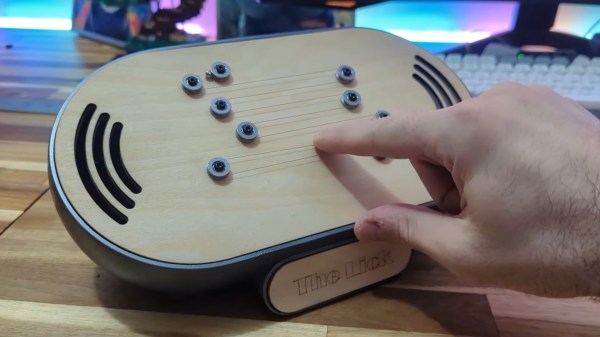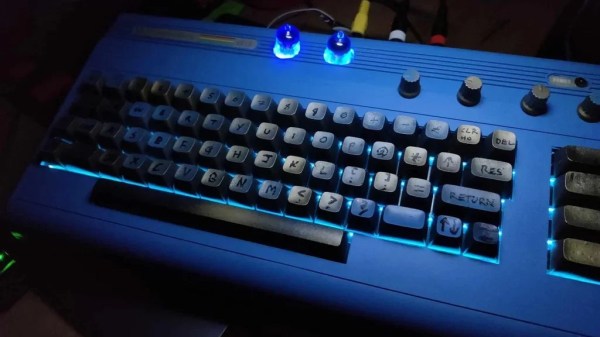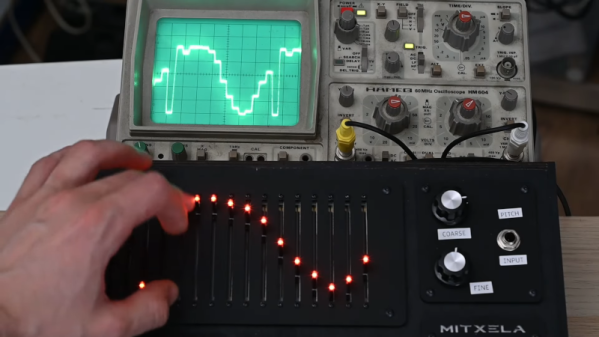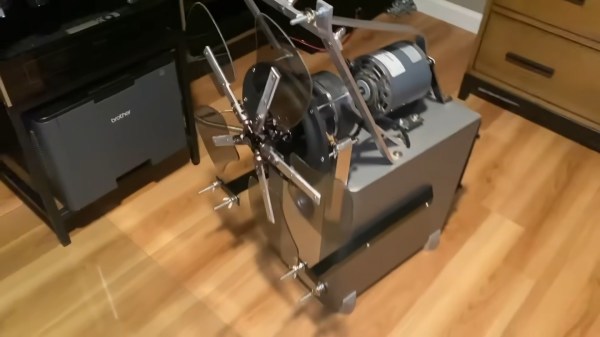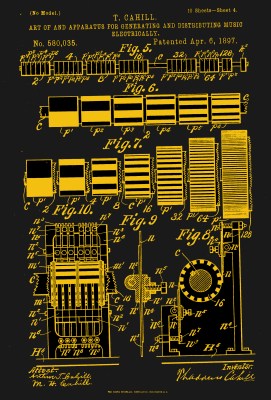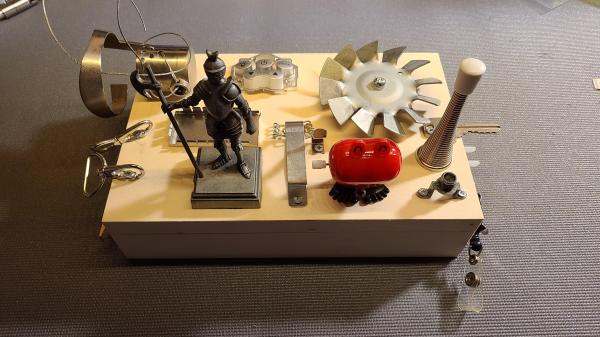Wouldn’t you love to be able to play a song on a stringed instrument even though you don’t have an iota of musical talent? That’s the idea behind Strumli, a single-string instrument built by [Factorem] that plays “the lick”. You know, the lick. Chances are, you’ve heard it somewhere before.
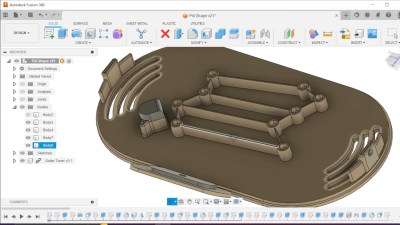 Essentially, it’s a pill-shaped bowl with a soundboard. A high-E guitar string is wound around bearings and tuned with a guitar tuner. The lengths of string between the bearings correspond to each note in the lick. Strum it in the right direction, and Bob’s your uncle.
Essentially, it’s a pill-shaped bowl with a soundboard. A high-E guitar string is wound around bearings and tuned with a guitar tuner. The lengths of string between the bearings correspond to each note in the lick. Strum it in the right direction, and Bob’s your uncle.
So how the heck did [Factorem] come up with the proper string lengths needed to play the song? After a bit of fancy math involving the equation that represents the relationship between the measurable frequency of a vibrating string under tension and the tension itself, [Factorem] had the overall length of the string. Then it was a matter of finding the frequencies needed to play the lick, along with their corresponding lengths.
Since the string exerts about 80 pounds of tension across the 3D-printed soundboard, some serious internal bracing is required, which [Factorem] figured out in CAD program. All the files are available if you want to build your own. Be sure to check out the build/demo after the break.
Would you rather just build a little harp? Here’s the inspiration for Strumli — a single-string number with a full octave.
Continue reading “One-String, One-Trick Pony Plays “the Lick””

